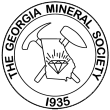GMS Field Trip
If you have any questions about field trips send email toGMS Field Trip
Coquina, Biogenic, and Heavy Mineral Sand, Plus Tours
in Florida and Georgia
Friday, September 21 through Monday, September 24, 2018
The International Sand Collectors Society (ISCS) held a conference in Jacksonville, FL in September and GMS members were invited to attend some of the conference field trips. Only a few GMS members took them up on the offer, but I think those who did were pleasantly surprised. At every beach we visited, coastal geologist Jennifer Coor explained the geology and, because she is involved in beach re-nourishment, she explained if the sand was native, and if not, where the sand was from.
On the first day, we started 60 miles south of Jacksonville, where we collected some beautiful coquina sand that is weathering from coquina rocks from the Pleistocene Anastasia formation. The sand is a golden, cinnamon color and is slightly translucent. We continued north along the coast to the next stop where the sand was very different from the first beach we visited even though it is only a few miles away. This time, the sand had more quartz and more modern shell bits and very little coquina. The final stop was in an area that was once mined for heavy sands, i.e. mineral sands. Though that day there were not many heavies to be found, a prior scouting trip there yielded large quantities of heavies and field trip attendees were able to get samples of that sand. It is a beautiful mixture of white zircon, shiny black ilmenite, deep red rutile, violet-pink garnets, reddish brown staurolite, and pistachio green epidote.
The second day, we visited a beautiful beach north of Jacksonville to collect biogenic sand. Much of the sand there is mostly shell fragments and is perfect for showing students at STEM nights that sand is not always tiny rocks. While we were studying some little baby dunes that are just now forming, we noticed the water was beginning to ripple, then it glistened with shiny silver and white flashes. The rippling grew in intensity until it erupted into an explosion of tiny fish leaping out the waves. Suddenly, a magnificent tarpon burst out of the water and landed with an impressive belly flop as the rippling fish who escaped that belly scattered back to the safety of the sea.
The third day, Bob & Olga Jarrett led the group on a tour of Jekyll Island, GA. They explained the geology of the island and showed us dune formations. ISCS member Kate Clover also explained the history of the early people who inhabited the island. We saw some beautiful dunes, collected heavy mineral sand, learned about angle of repose, played with magnets, made sand art with sand and shells from the beach, and we even saw an alligator!
On the last day, we spent the entire day at a heavy sands processing facility. We saw sand go all the way from the ground to separated minerals. The heavy minerals were deposited in a Pleistocene coastal terrace that is now 50 miles inland, and are the same minerals we collected on the beaches: ilmenite, rutile, staurolite, and zircon. We collected samples of sand that was concentrated immediately as it was extracted from the ground, then visited multiple processing mills and collected samples of the individual minerals at the end of the process. It was a fascinating tour.
Many thanks to Jennifer Coor, Kate Clover, Bob Jarrett, Olga Jarrett, and the employees at the sand processing facility. They were all very generous with their time, extremely knowledgeable about the places we visited, and answered all of our questions. Also, many thanks to GMS members Mickey Cecil and Gary Maddox who were invaluable when Charles and I were trying to figure out which beaches to visit. They graciously took us to numerous places and we could not have arranged so many trips without them.
Lori Carter
On behalf of Charles Carter, GMS Field Trip Chair
e-mail:
Day 1, Location 1: Coquina Sand
Photo by Lori Carter
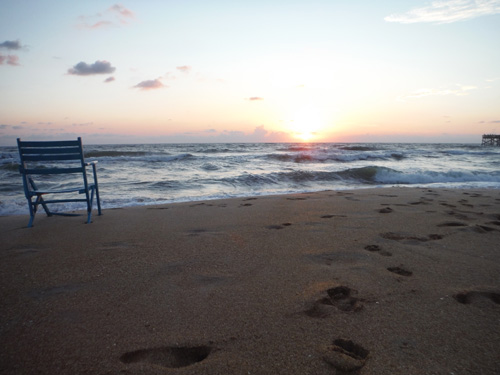
Advantages of an early start time: no traffic, tide in your favor, stunning sunrise.
Photo by Lori Carter
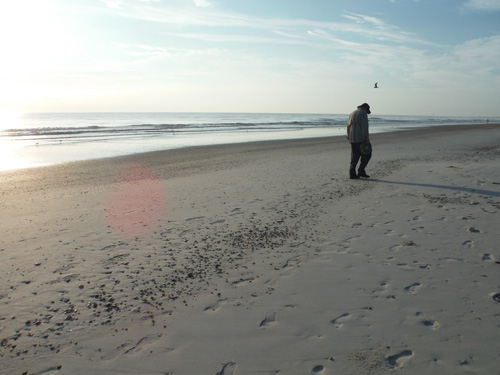
Charles found all the best spots for the beautiful coquina sand
Photo by Leo Kenney
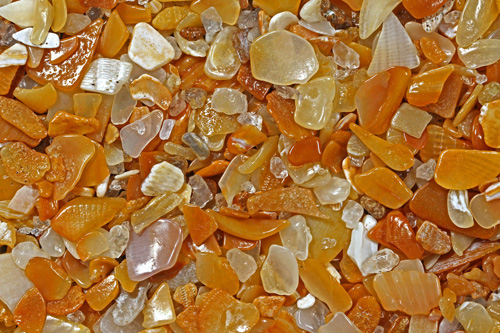
Pleistocene coquina from the Anastasia formation is eroding into this beautiful sand
Day 1, Location 2: Biogenic Sand
Photo by Lori Carter
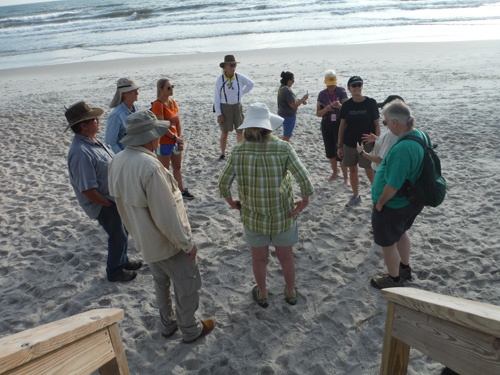
Everyone gathered around to hear about the geology of the area
Photo by Lori Carter
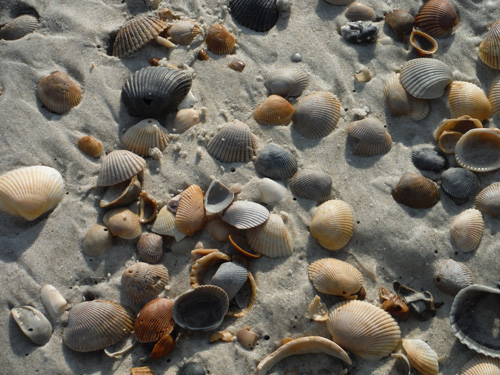
Future biogenic sand, or shells if you prefer
Photo by Leo Kenney

This sand is very different from the sand at the first location, even though it's only a few miles away.
It has very little coquina and has lots of modern shell bits.
Day 1, Location 3: Heavy Mineral Sand
Photo by Lori Carter
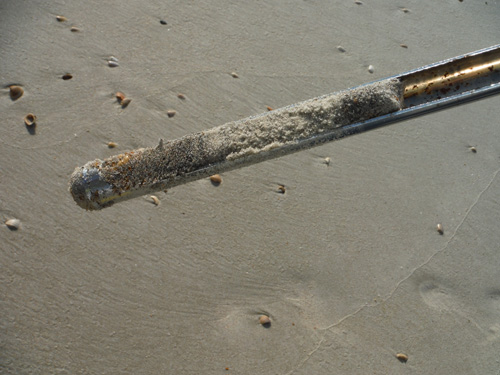
This area was once mined for heavy minerals.
A sand core shows the dark, heavy minerals in distinct bands.
Photo by Lori Carter
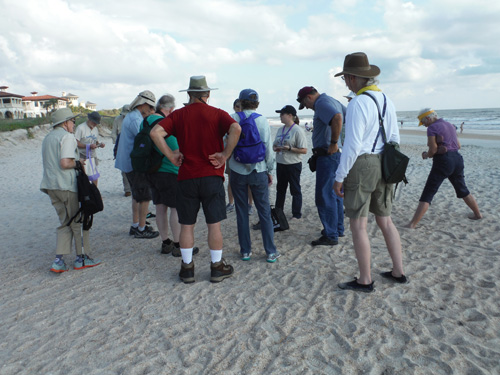
Coastal geologist Jennifer Coor (center right in baseball cap),
explained the geology of each location.
Photo by Leo Kenney
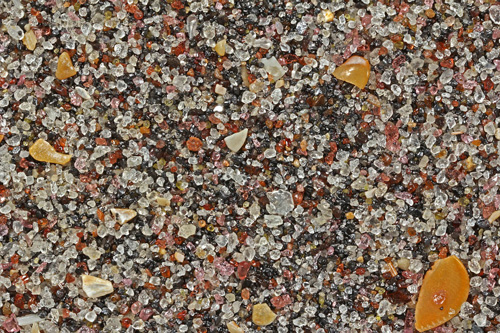
The sand at this location contains:
quartz (angular white/clear), zircon (rounded white), garnet (pink), ilmenite (black),
rutile (deep red), staurolite (reddish brown), epidote (green), and shell bits.
Day 2: Biogenic Sand
Photo by Lori Carter
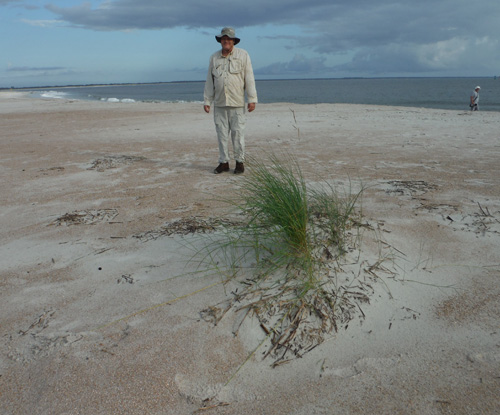
Baby sand dune, just starting to form (Charles for scale)
Photo by Lori Carter
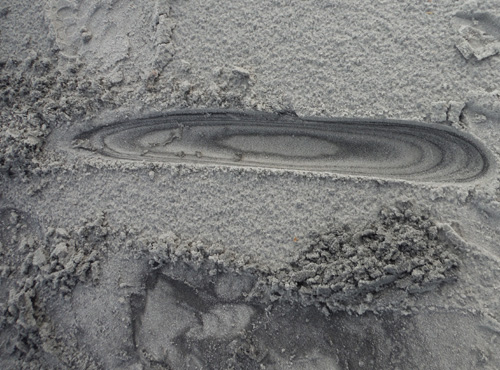
The dark bands are not dirt or oil, they are heavy minerals
Photo by Lori Carter
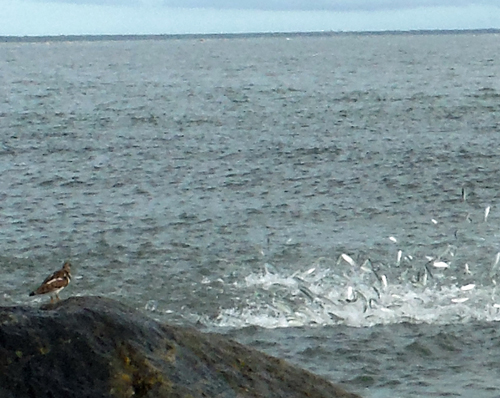
The little birdie on the left got a front row seat for a fish frenzy show
Day 3: Island Geology Tour and Workshops
Photo by Lori Carter
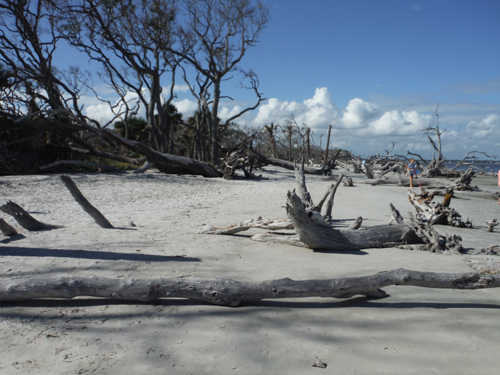
Driftwood beach
Photo by Lori Carter
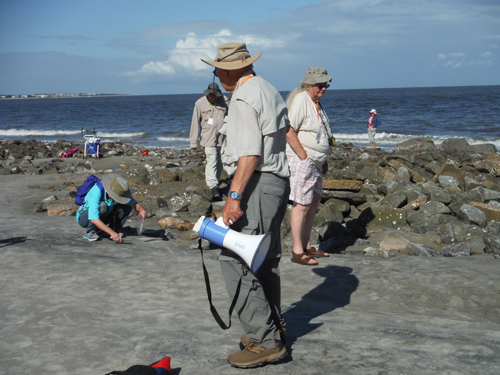
Betty McIntyre (blue shirt), Charles (back), Bob Jarrett, and Olga Jarrett exploring the beach
Photo by Lori Carter
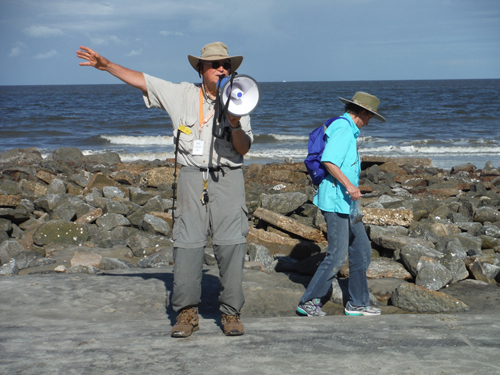
Bob Jarrett explained the geology of the area while Betty McIntyre checked out the big rocks
Photo by Lori Carter
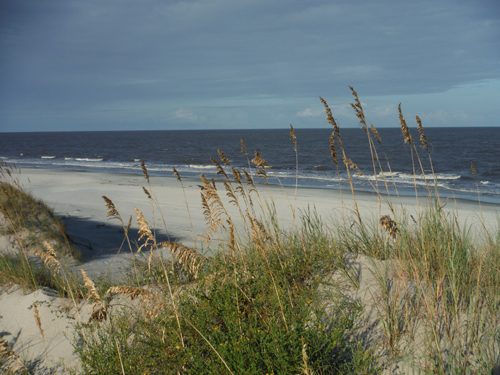
Beautiful dunes
Photo by Lori Carter
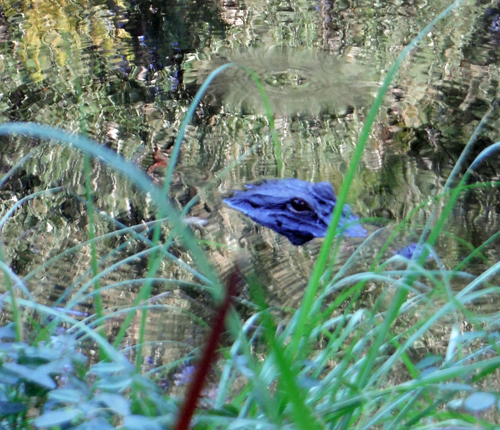
This little gator was keeping an eye on us and we kept an eye on the little gator
Photo by Lori Carter
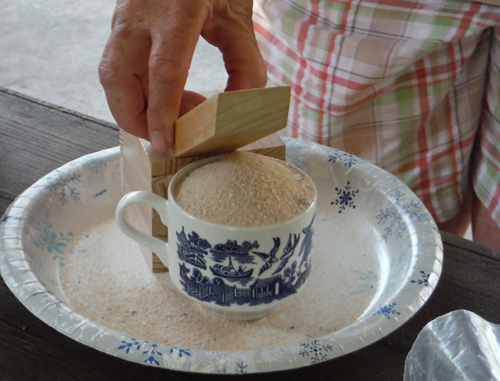
Olga Jarrett did a quick workshop about angle of repose
Photo by Lori Carter
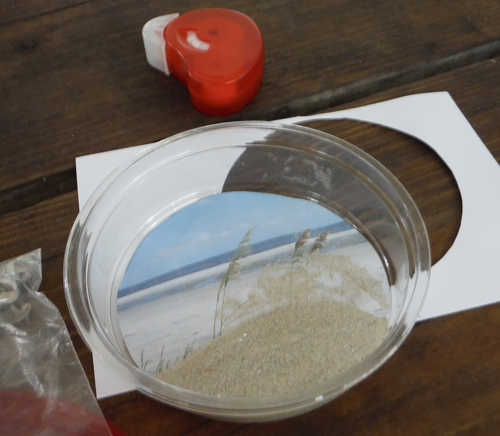
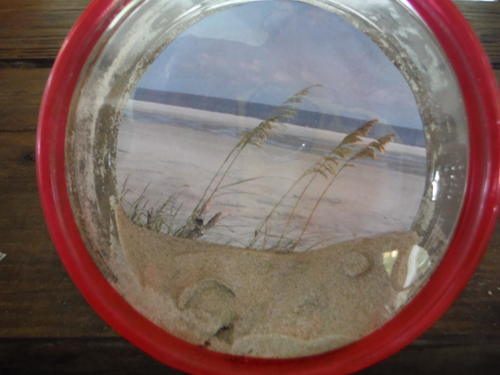
Olga also did a sand art workshop using sand and shells we collected earlier that day
Day 4: Heavy Sand Facility Tour
Photo by Lori Carter
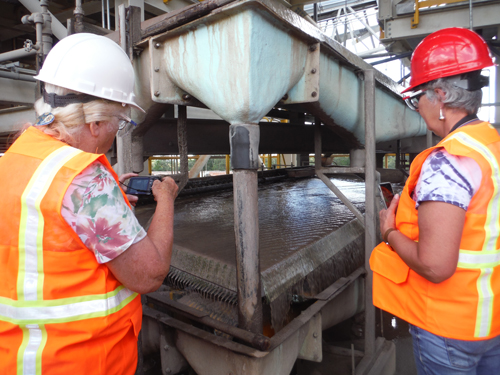
Olga (left) and Kate Clover (right) watch a sand separation process that involves a shaking table
Photo by Lori Carter
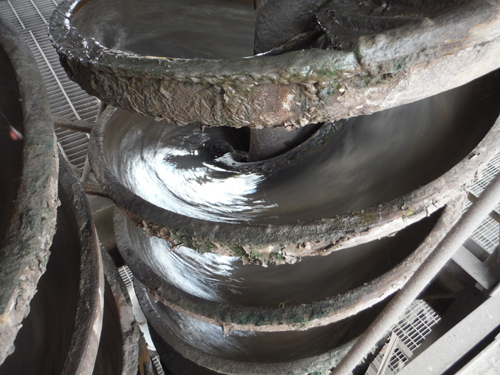
A heavy sand separation process that uses centrifugal force and gravity
Photo by Lori Carter
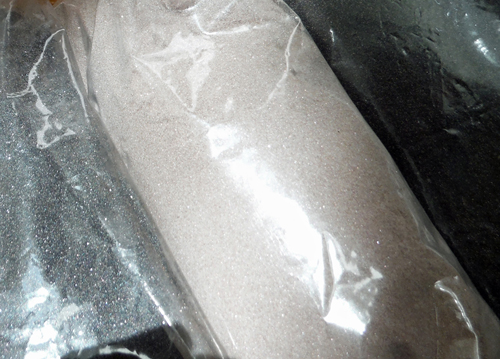
Bags of heavy sands after separation (left to right): rutile, zircon, ilmenite.
Click below for field trip policies

Copyright © Georgia Mineral Society, Inc.
